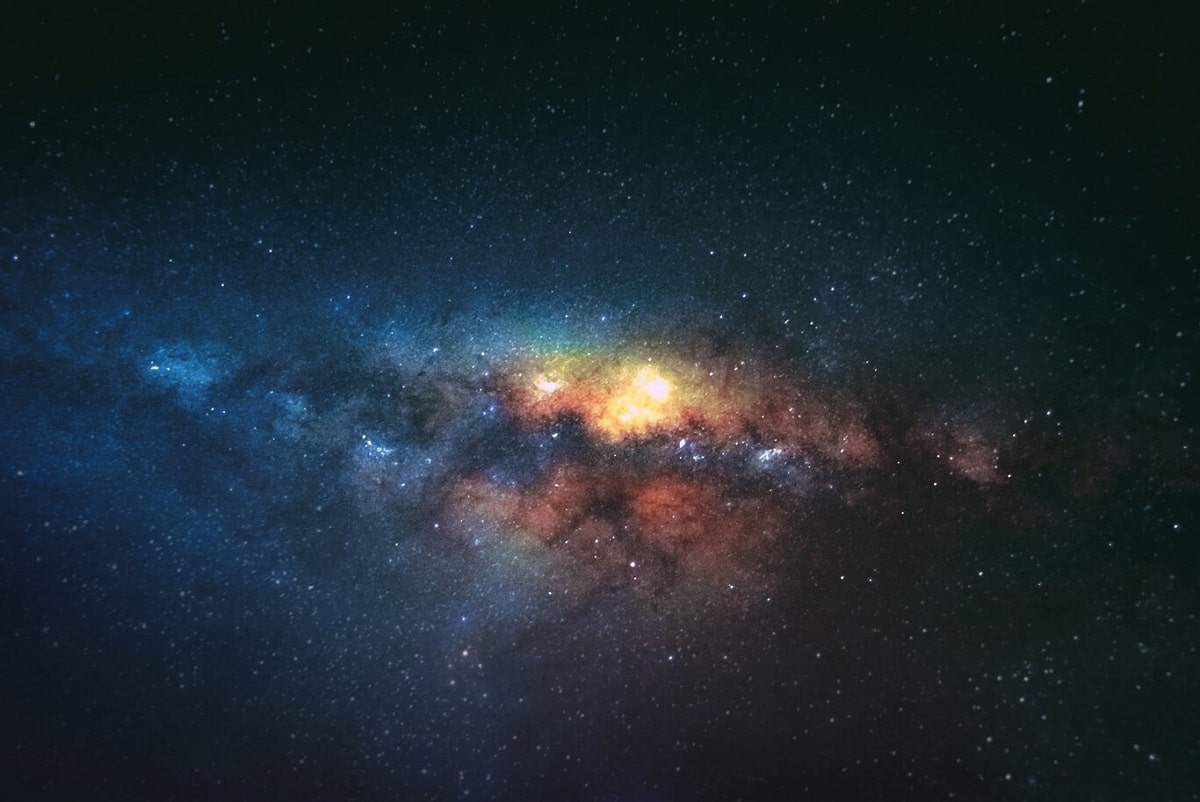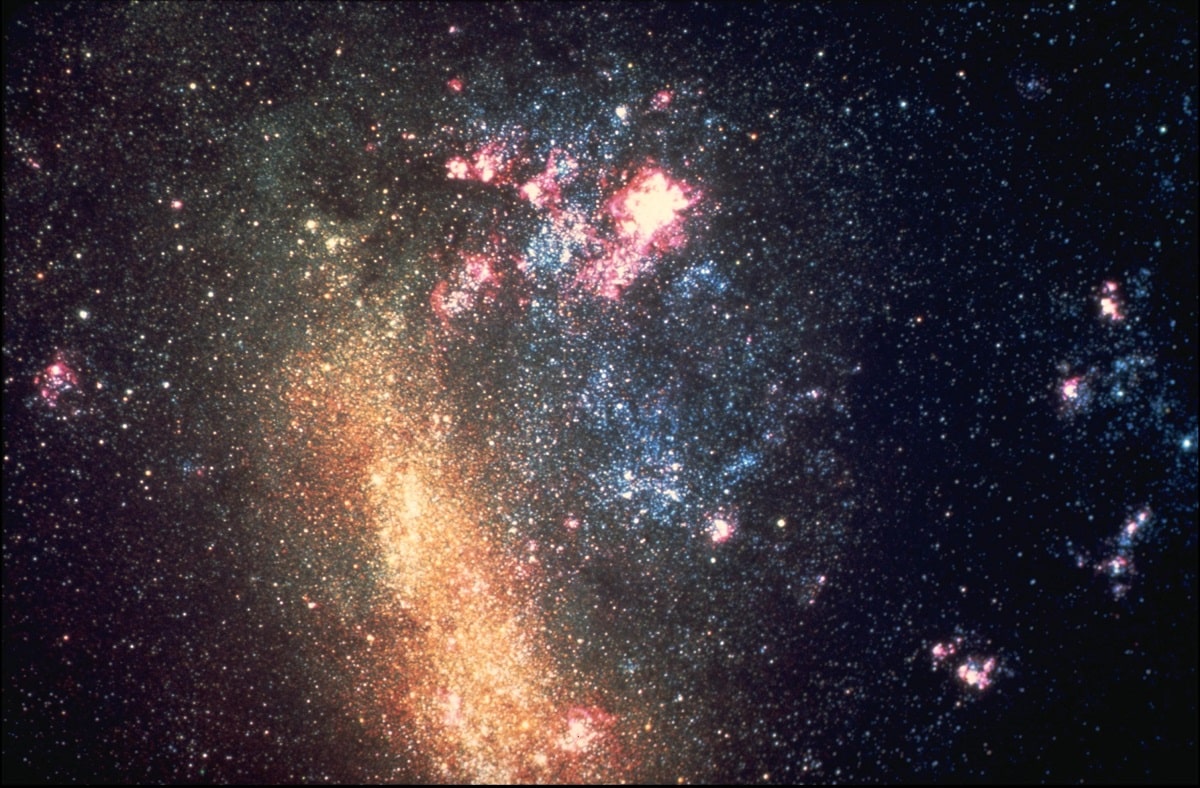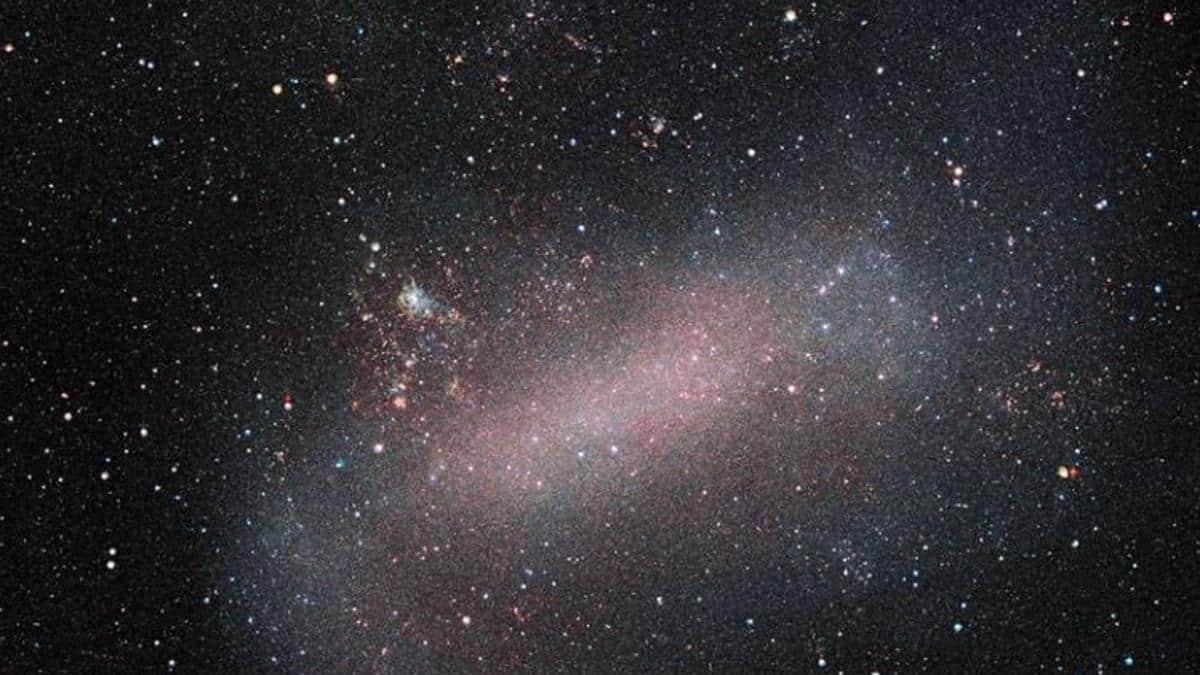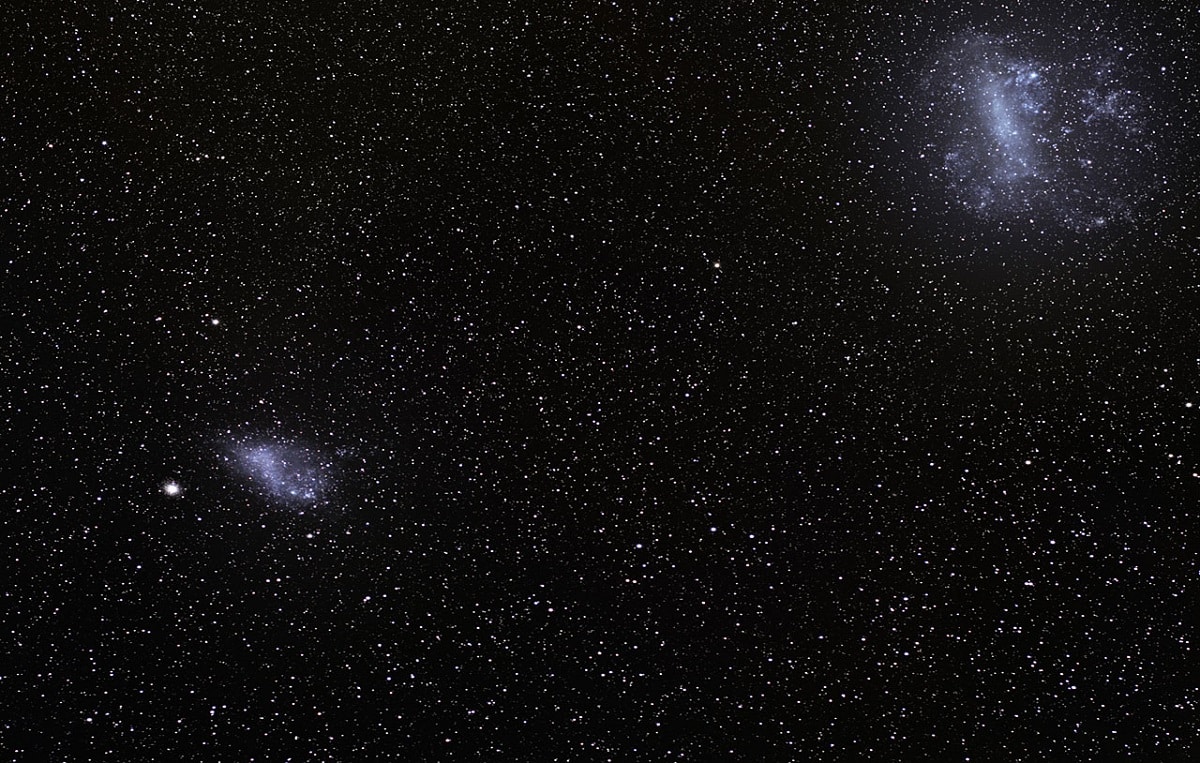
The great Magellanic Cloud it is a nearby galaxy that was thought to be an irregular galaxy until astronomers took a closer look at it. It could be a spiral. The Large Magellanic Cloud and its dwarf galaxy, the Magellanic Cloud, can only be seen in the skies of Earth's southern hemisphere. The Milky Way constantly consumes gas that flows from the Magellanic Clouds through the Magellanic Flow. Eventually these two smaller galaxies may collide with the Milky Way.
In this article we are going to tell you everything you need to know about the Large Magellanic Cloud, its characteristics, origin and much more.
Key features

The main characteristics of the Magellanic Cloud are the following:
- It can be seen from the southern hemisphere and is the second closest galaxy to the Magellanic Cloud.
- It is one of eleven dwarf galaxies orbiting our own Milky Way and It is considered an irregular galaxy.
- It consists of red rocks, stars, young stellar clouds, and a bright region of visible formation known as the Tarantula Nebula.
- The brightest modern supernova, SN1987A, exploded in the Magellanic Cloud.
- It has an extension of about 30.000 light years.
- It is believed to be the most massive satellite galaxy of the Milky Way.
- The prominent red knot at the bottom is known as the Tarantula Nebula, a star-forming region in the Large Magellanic Cloud.
- It is of the interrupted rod-spiral type.
- It has a diameter of 14.000 meters and a distance of 163.000.
- It has about 30 billion stars.
The main feature of the Magellanic Cloud is its entire structure, which is defined as a dwarf galaxy, which means that it breaks the mold like many other galaxies in that it does not have elliptical or spiral features. Its shape led scientists to include it in lists of galaxies with peculiarly irregular shapes.
It should be noted that not all galaxies that exist in the universe contain a general shape, such as an ellipse. While most galaxies have spiral patterns, some galaxies, often called dwarf galaxies, tend to contain specific shapes that immediately describe them as irregular galaxies.
Discovery of the Magellanic Cloud

The fact that the Sagittarius elliptical galaxy was discovered some time later prompted scientists to investigate where in outer space it resides. The results were surprising, finding that this and the Magellanic Clouds are interconnected and related.
At a distance of about 75.000 light years, the Sagittarius galaxy and the Magellanic Cloud are far apart. The distortions produced by the forces exerted by the tides through their interaction with the Milky Way cause distortions that affect certain effects that make two galaxies interact through certain currents.
These streams are composed of neutral hydrogen, giving rise to an interaction effect between the two galaxies, often leading to conditions that eventually damage outer features corresponding to their galactic disks.
Both the Magellanic Clouds and the Saturn Galaxy have unique and remarkable morphological characteristics, in terms of their mass and structure, revealing two aspects that distinguish them from these two components, mass and structure, from those that come from the Milky Way sample.
Some history
The peculiar position of the Large Magellanic Cloud, exactly in the direction of the South Pole of the Ecliptic, means that it cannot be seen at any time from Mediterranean latitudes, so it remained unknown in classical times.
The first mention of the Large Magellanic Cloud is found in the Book of Stars written around 964 by the Persian astronomer Abd Al-Rahman Al Sufi. He was called Al Bakr, the White Bull in South Arabia, because the Large Magellanic Cloud is visible from South Arabia.
Amerigo Vespucci recorded the following observation in a letter on his third voyage in 1503-1504. During his circumnavigation of the Earth, Ferdinand Magellan was the first to inform the West of the existence of the galaxy, which today bears his name. The first to study the Large Magellanic Cloud in detail was John Herschel., who settled in Cape Town between 1834 and 1838, analyzing the 278 miscellaneous objects it contained.
The Large Magellanic Cloud was considered the closest galaxy to the Milky Way until the discovery of the Sagittarius Dwarf Elliptical Galaxy in 1994. With the discovery of the Canis Major dwarf galaxy in 2003, the title of closest galaxy fell to the latter. .
Morphology and objects of the Magellanic Cloud

According to NASA's Extragalactic Object Database, the Large Magellanic Cloud is classified as SB(s)m, a barred spiral (SB) galaxy with no irregularly shaped ring(s) structure and no bulge (m). The irregular appearance of the galaxy it may be the result of interactions with the Milky Way and the Small Magellanic Cloud.
For a long time it was thought that the Magellanic Cloud was a flattened galaxy, like a spiral galaxy, and that it could be assumed to be at a distance from us. However, in 1986, Caldwell and Coulson found that the Cepheid variables in the northeast of the large cloud region are closer to the Milky Way than the Cepheid variables in the southwestern region. Recently, this tilted geometry has been confirmed by observations of Cepheid variables and red giants in the helium fusion phase. These works show that the inclination of the LMC is about 35º, considering that 0º corresponds to a plane perpendicular to our galaxy.
The Large Magellanic Cloud it contains about 10.000 billion stars and is about 35.000 light-years across. Its mass is about 10 billion times that of the sun and one tenth that of the Milky Way. Like most irregular galaxies, the large cloud is rich in gas and dust and is currently in an active period of star formation. Various studies have found about 60 globular clusters (just under half the size of the Milky Way), 400 planetary nebulae, and 700 open star clusters in the Large Magellanic Cloud, as well as hundreds of thousands of giant and supergiant stars.
I hope that with this information you can learn more about the Magellanic Cloud and its characteristics.